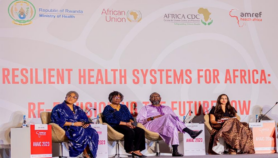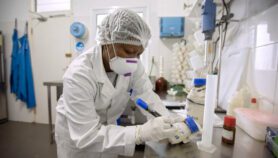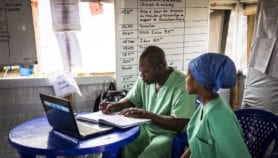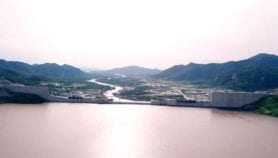By: Athar Osama
Send to a friend
The details you provide on this page will not be used to send unsolicited email, and will not be sold to a 3rd party. See privacy policy.
Successful efforts to implement effective South–South research collaboration requires a better understanding of what works best and why.
Despite many scientists’ belief, practical application can often precede theoretical understanding in the field of scientific and technological innovation. The invention of the aircraft is one example — it was only after the Wright brothers mastered flight that the science of aeronautics developed, bringing significant refinements and improvements to the technology.
The same is true of South–South research collaboration. Here, the practical implementation has preceded any conceptual framework (or theory). With a few notable exceptions (one being a survey on South–South cooperation for development published in the United Nations Development Programme’s Cooperation South magazine in 2000), there is a general dearth of systematic thinking on, and deep understanding of, the basic issues and challenges that have constrained the growth of this idea.
Several questions deserve closer study:
– What drives countries, institutions and individual scientists of the South to collaborate with each other in scientific and technological development?
– What kind of institutional designs work (and don’t work)?
– What topics are particularly amenable to collaborative research?
– Is South–South research collaboration best pursued in a bilateral or multilateral framework?
– What kind of policies can be deployed to promote such initiatives?
Policy framework
The answers would constitute a comprehensive framework to guide the development of South–South research collaboration. Such a framework would put all the pieces of the puzzle together seamlessly. The current absence of answers, however, is likely to remain a significant constraint, if not an outright bottleneck, even though South–South research collaboration may mature over time.
We urgently need to develop such a comprehensive framework for both thinking about and implementing South–South collaboration in both bilateral and multilateral settings. It would draw on diverse experiences to address each of the major issues identified above.
This framework would use knowledge about international best practices, taken not only from existing South–South research initiatives, but also from North–North and North–South research collaborations. This would help develop a best practice toolkit to ensure South–South collaborations operate effectively.
A comprehensive framework would also encourage an evidence-based policy regime for South–South collaboration. It would identify effective policy levers, initiatives, and institutional interventions to inform the policy debate, so helping design South–South collaborations that deliver on their promises.
Understanding what motivates scientists would be an important component of such an evidence-based policy regime. This would help design incentives that encourage researchers to work under different cooperative schemes.
The framework would draw on the theory and practice of international cooperation in general to develop a workable recipe for multilateral scientific collaboration. It would need to avoid generating conflicting political and national interests, exploit similarities and complementarities in scientific capacities, and overcome regulatory and legislative differences.
Evidence-based foundation
Both the framework itself, and the process of arriving at it, would foster South–South research collaboration in three ways.
First, it would rid the field of vague, ill-structured and untested ‘experiments’ and provide a solid evidence-based foundation. Collaboration may be based on an adaptation of the centres of excellence model, on the replication of international cooperative agreements, by creation of institutions similar to the International Centre for Theoretical Physics in Trieste (which funds a large number of scientific fellowships), or even a mix of them all. In each case, a focused, evidence-based policy regime is most likely to succeed.
Second, the process of creating and arriving at the framework will itself increase the chances of a political consensus on its implementation. International scientific collaboration requires political will at the highest level within the participating countries. And this must be fully backed by a serious commitment of resources. Only by putting their money where their mouths are can policy-makers ensure that South–South research collaboration is more than a political slogan that looks good on paper, but delivers little of sustained value.
Third, a comprehensive, multilateral approach to South–South research collaboration would provide the basis for a common legislative and institutional framework. This could free institutions from bureaucratic red-tape that might otherwise restrict international collaboration.
Placing South–South collaboration in a multilateral, rather than bilateral, framework would also create a level playing field, allowing countries to participate on appropriate terms and ensuring that larger players do not exploit smaller countries for short-sighted political gains.
For inspiration we can look to the Bayh-Dole Act of the 1980s in the United States. This provided a framework for university—industry collaboration and technology commercialisation that removed institutional bottlenecks and substantially increased technical licensing and collaboration by US academic institutions.
If properly designed and implemented, a framework for South–South research collaboration could have a similarly invigorating effect, energising and empowering this important way of organising scientific activity.
Athar Osama holds a PhD in science and innovation policy from Pardee – RAND Graduate School in Santa Monica, California, USA. He works as a senior consultant at ANGLE plc in the UK. He is also a founder of Muslim-Science.com and can be contacted for comments at [email protected].
This article is part of a Spotlight on The promise of South–South cooperation.













